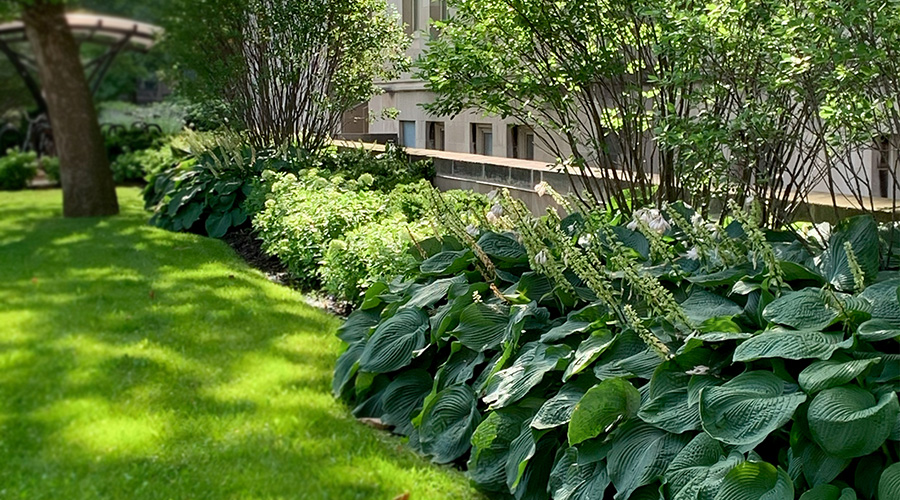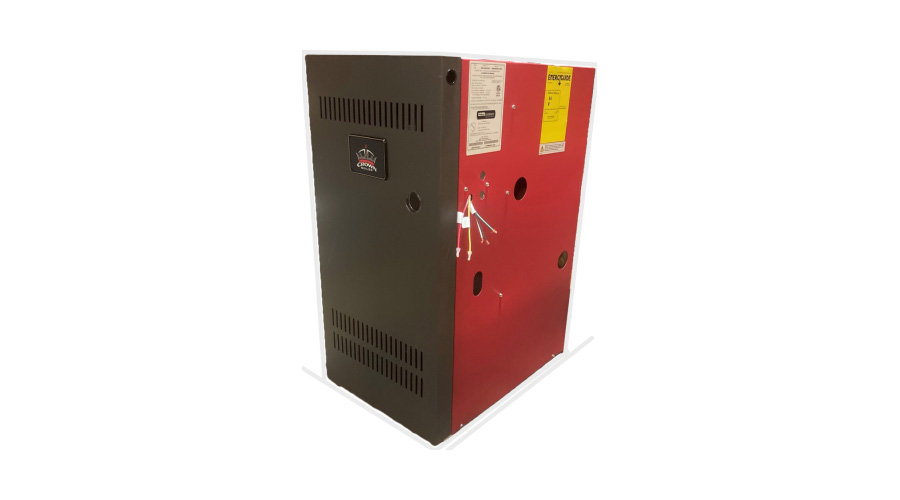
Steps for Maximizing Small Garden Spaces
Institutional and commercial facilities can receive an aesthetic boost from visually pleasing grounds April 8, 2024
By Tom Marsan, Contributing Writer
In the bustling world of institutional and commercial facilities, every inch of space holds potential for enhancing the customer experience and fostering a welcoming atmosphere. Amidst concrete jungles, a well-designed garden oasis can serve as a respite, offering tranquility and visual delight. However, crafting a captivating garden in limited spaces presents unique challenges that require innovative solutions from grounds managers.
From strategic layout considerations to thoughtful plant selection, every aspect plays a crucial role in transforming compact areas into thriving green havens. Here are strategies and design principles to unlock the full potential of small commercial and institutional garden spaces.
Draw out your vision: Before diving into any garden project, start by measuring the area and creating a floor plan. Consider key aspects like furniture placement, plants, and hardscaping. This initial step allows for experimentation and ensures informed decisions before any purchases are made. A fire pit or other hardscaping additions are a lot easier to do on paper.
Utilize the principles of design: Incorporate the fundamental design principles of unity, repetition, proportion, color, and balance. These principles guide the layout and aesthetic cohesion of garden spaces, setting your landscaping apart from the competition.
Disrupt the flow: Introduce visual interest by breaking away from standard square or rectangular layouts. Add larger elements like trees or sculptures strategically placed in corners to diversify the visual landscape. Add something to attract the eyes to a specific piece of the landscaping.
Utilize angles: Optimize space and create the illusion of expansiveness by employing a 45-degree angle into the garden design. This technique enhances sightlines, elongates pathways, and adds variety to the spatial arrangement.
Utilize groups and repetition: Make the landscape look well designed, not random. Maintain a cohesive and visually appealing landscape by planting in large groups and utilizing repetition. Embrace a simple color palette and complementary foliage textures to avoid overwhelming the space. Landscaping is one of those things that not everybody can perfect, but everybody knows when it isn’t done right.
Match the exterior and interior: Extend architectural and interior styles into the garden to seamlessly integrate indoor and outdoor spaces. Consistent material choices in hardscaping enhance continuity and create a sense of spaciousness.
Opt for multi-faceted furniture: Maximize functionality and comfort with furniture that serves multiple purposes. Choose statement pieces that conserve space and provide versatility, such as convertible seating or storage options.
Consider all seasons: Ensure year-round visual interest by selecting plants that thrive in each season. Create a balanced planting scheme that incorporates foliage, blooms, and texture variations for a dynamic garden experience.
Engage the senses: Enhance the garden atmosphere by incorporating fragrant herbs and tactile elements. Container gardening allows for easy access to aromatic plants, enriching the sensory experience within the limited space.
Utilize multipurpose planters: Experiment with clustered arrangements of pots to introduce seasonal variety and functional diversity. Combine ornamental and edible plants to maximize both aesthetics and utility.
Utilize details: Elevate the visual appeal of the garden by incorporating intricate details. Features like mosaic paths or small water features serve as focal points, adding personality and charm to the space.
Go vertical: Harness vertical space to introduce greenery and visual interest. Install trellises, vertical planters, or artistic elements on walls and fences to optimize space utilization and enhance aesthetic appeal.
Layer for depth: Generate visual depth by layering plants of varying heights and textures. Incorporate low-growing annuals at the forefront and utilize dwarf conifers for structural diversity throughout the garden design.
In the realm of commercial landscaping, the impact of a well-executed garden transcends mere aesthetics — it becomes a powerful tool for enhancing customer satisfaction, promoting relaxation, and distinguishing the facility from the competition. By embracing creativity and strategic design principles, grounds managers can transform small spaces into vibrant oases that captivate the senses and foster connection with nature. Go forth with confidence, armed with the knowledge and inspiration to create inviting outdoor environments that leave a lasting impression on all who visit.
Tom Marsan is a certified snow professional who has been in the landscaping and snow removal industry for about two decades. He is an active member of ILCA and SIMA and is currently the general manager at Beverly Companies in Chicagoland.
Next
Read next on FacilitiesNet












